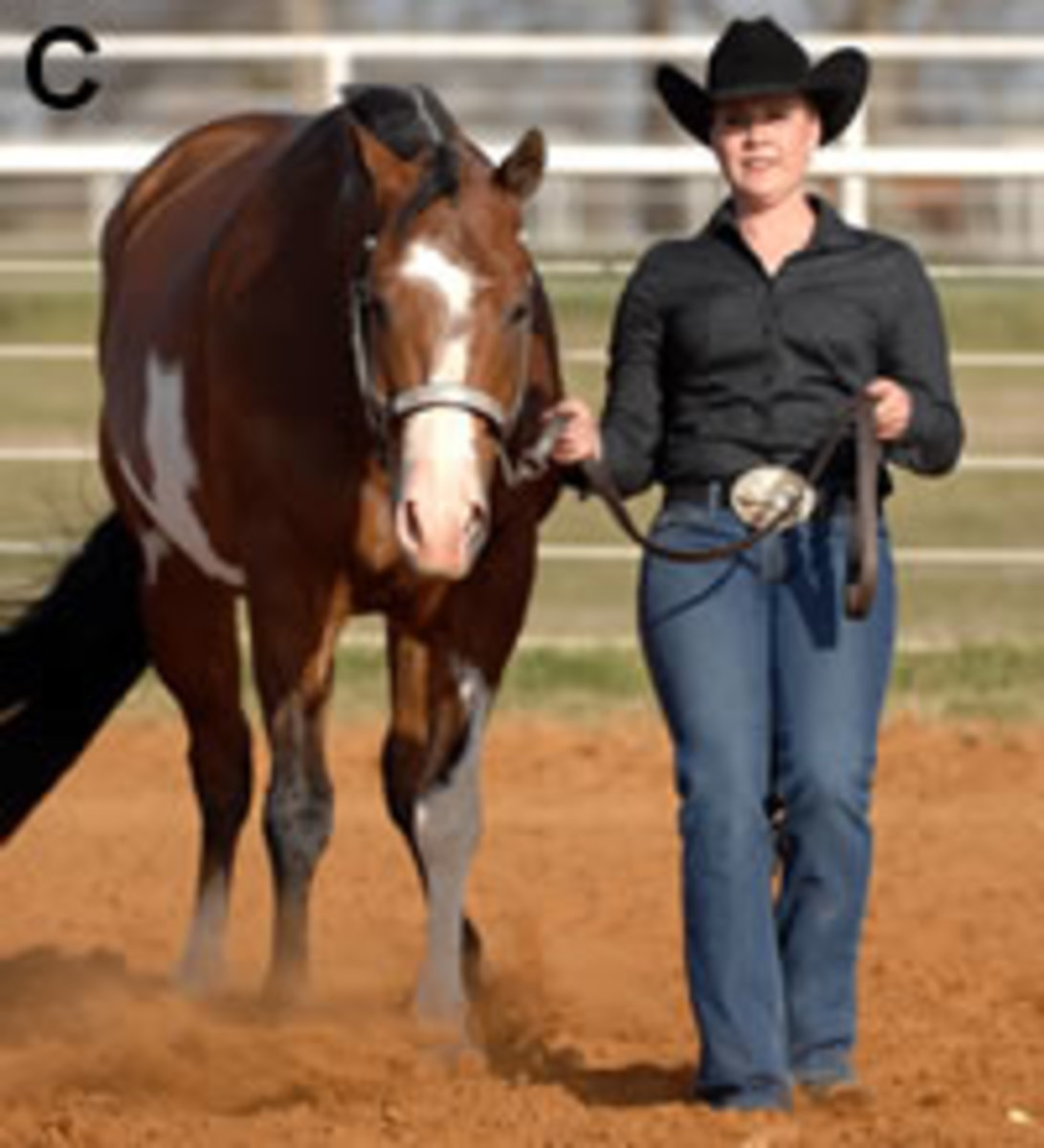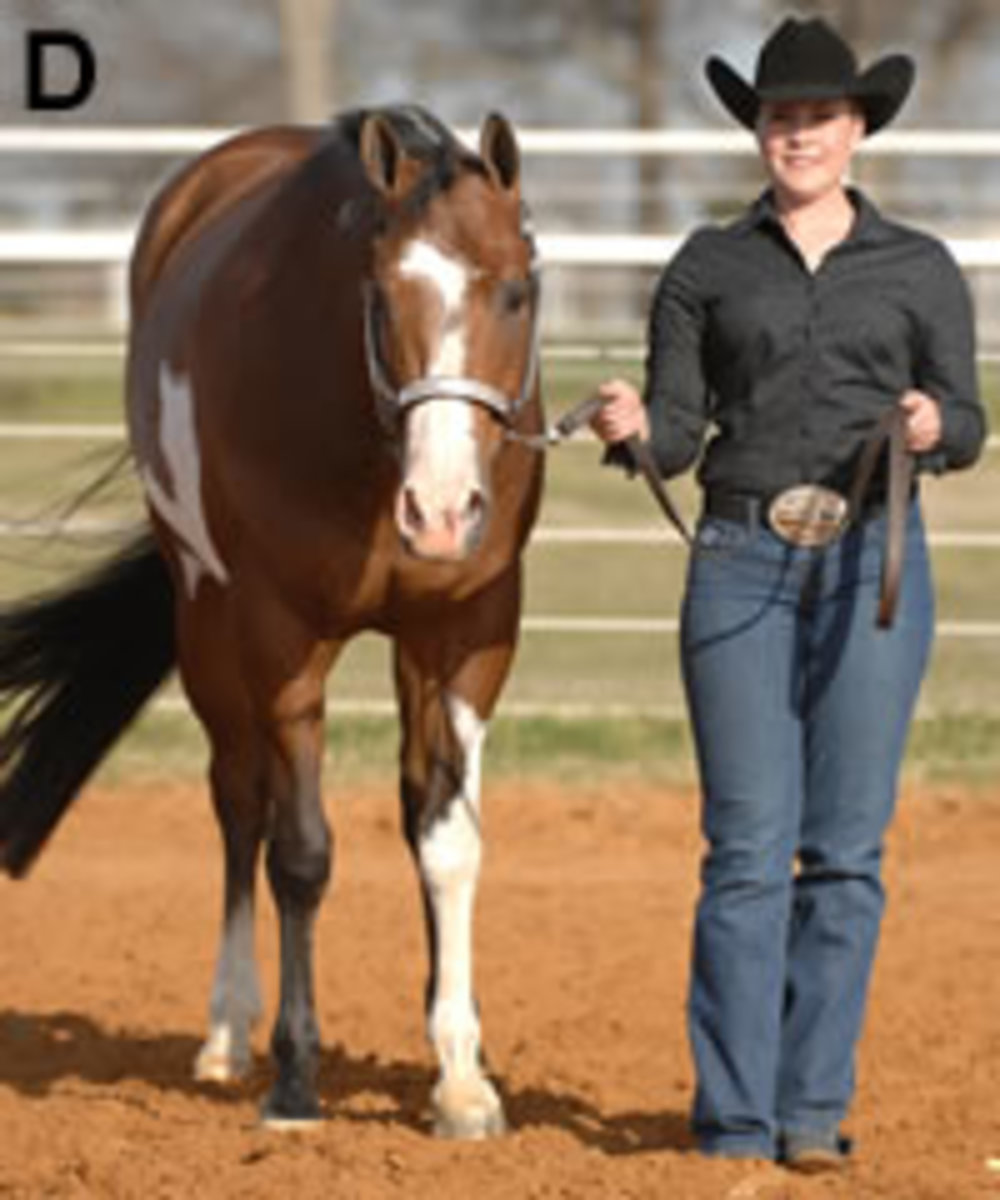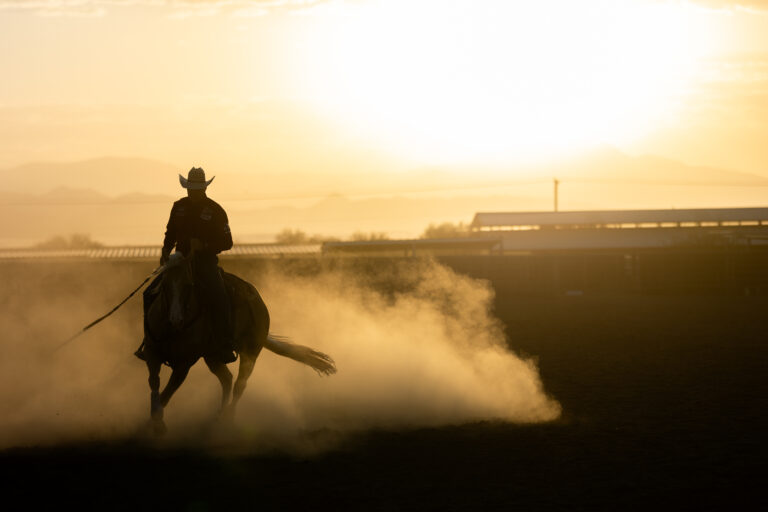Goal: To improve the aesthetic quality of your showmanship at halter presentation by mastering stopping maneuvers after walking a straight line toward the judge. You’ll study and learn the correct and incorrect ways to time your stopping cues to stay in sync with your horse.
Benefits: By mastering stopping cues, you’ll demonstrate to the judge a high level of control over your horse’s body. And, as a result, you’ll minimize excessive movements that detract from the overall fluidity of your showmanship pattern.
In part 1 (January ’08, Horse & Rider) of our three-part Showmanship Polish series, top trainer Andrea Simons taught you how to avoid three common hand-position mistakes. After you’ve studied and mastered the correct hand position, turn your attention toward “the stop” in front of the judge.
(Keep in mind: As I stated in part 1, when I judge I want to see fluid, controlled movements. Your maneuvers should happen with a purpose, but shouldn’t be overdone. A showmanship pattern should look like a flowing “dance,” with all movements blending together. To achieve this, you and your horse must be familiar with one another, and you need to practice extensively, paying close attention to details. Hard work pays off in the show ring!)
In the photos here, a student demonstrates the correct and incorrect ways to time your cues for a smooth and precise stop.
A Correct Stop
When you stop, leave at least one horse length between your horse’s nose and the judge. If I’m judging, I’m not going to be impressed if you stop with your horse’s nose on my clipboard. You need to perfect your cues and body language to effectively communicate with your horse, so eventually he’ll be watching you out of the corner of his eye for signals of the impending stop.
When you stop, your horse’s hips should be directly opposite the judge. If you have mastered the correct position while walking the straight line, stopping straight will be easier. If you stop your horse too early or too late, chances are, he won’t be straight, and his back-up maneuver will likely be crooked or incorrectly angled.
Bad Timing, Photo A
As you can see in this photo, the handler is saying “whoa” as she stops, which has caused her horse to crumple into his stop. Eventually, you’ll want to graduate to the level where you don’t have to use a verbal command for stopping, but as you train your horse to stop correctly, teach him to associate “whoa” with stopping. Then, you can combine body language signals to serve as stopping cues–without the “whoa.”

(Note: As you’re working on this, be consistent with your use of “whoa.” It should only be used to tell him to stop now.)
In this photo, you’ll notice that when the handler doesn’t begin her “whoa” until after she’s stopped herself, her horse keeps walking until he feels pressure from the lead. And, since he had no preparation to collect himself prior to stopping, he’ll have to quickly plant his front feet, which will cause the rest of his body to crumple underneath him. Not only does this look ugly, it will prevent him from stopping straight and in-line with the judge and will guarantee a poor performance on the next maneuver.
Good Timing, Photo B
Here, you can see the handler saying “whoa” while she and her horse are still walking. Due to the angle we’re looking at in this photo, it’s somewhat difficult to decipher whether the horse is walking; however, if you look closely you’ll see that his front left leg is about to step forward.

When the handler initiates the stop while they’re still walking, her horse has ample time to process what she’s asking. So, when she stops, her horse will too. If he doesn’t stop or begins to drag you with him, quickly bump him with the lead to bring his attention back to you. Once you’ve corrected him, and he obeys, immediately remove pressure on the lead.
Good Timing, Photo C
In this photo, the horse has responded to the handler’s “whoa” and initiated the stop himself. As you’re practicing, incorporate other cues through your body language; for example, slightly tilt your shoulders and upper body back (just an inch or two) as signal to your horse that you’re about to stop. If he needs a little more instruction, slightly lower your lead (right) hand to add a small amount of lead-shank pressure on him. And, finally, add a “whoa,” (if necessary).

Then, cease your forward movement, and hopefully he’ll stop immediately and straight without any further lead-shank pressure. In this photo, the handler has started to stop herself a little too late. This is a common error. But, as you and your horse become more familiar with one another, and you trust that he’ll pay attention to your cues, you’ll get the knack of stopping precisely with him.
Good Timing, Polished Stop, Photo D
Here, the handler is demonstrating a correct and precise stop. Notice that she and her horse are in perfect alignment with one another. She’s positioned herself in between her horse’s eye and mid-neck; she’s holding the lead correctly; her horse is standing straight with his legs in perfect alignment with one another; and he has a pleasant expression on his face and looks like he’s paying attention.

This is the stop you want to achieve. By practicing and perfecting these tips, you’ll be able to master this stop, too.
To read part 1 of Andrea Simons’ Showmanship Polish series, “Hand Position & Control,” see the January ’08 issue of Horse & Rider. Part 2 in February ’08 will feature pivot pointers, and part 3 in March ’08 will offer advice on how to synchronize your legs with your horse’s. If you don’t have copies of these issues, call 301-977-3900 ext. 0 to order the back issues.
A multi-carded judge as well as a top trainer, exhibitor, and valued Team H&R member, Andrea Simons was tapped to judge the AQHA World Championship Show in 2005. She’s judged for over 25 years in the U.S. and abroad. Simons has owned, trained, exhibited or bred over 100 world and honor roll champions and has served on the National Snaffle Bit Association’s board of directors since 2001. Andrea’s Simons Show Horses is based in Aubrey, Texas.






